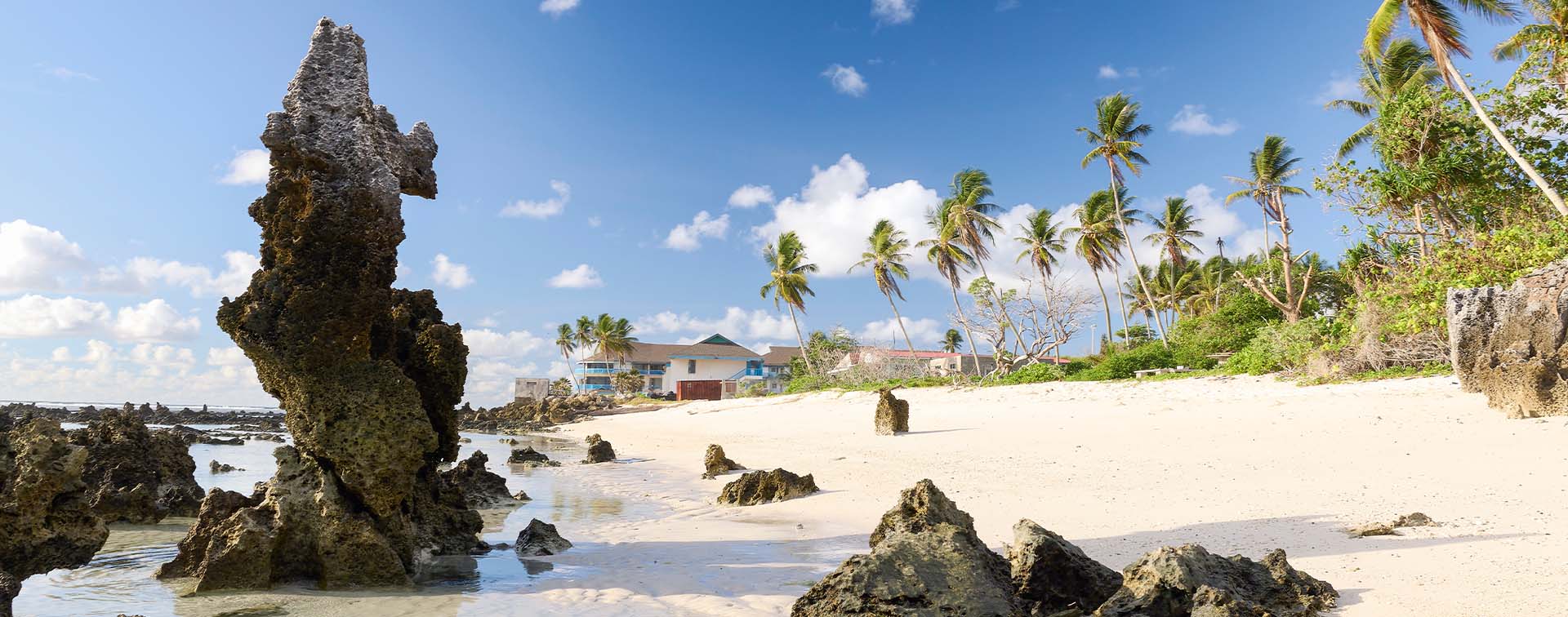
Edward Clark is Chief Executive Officer at the Nauru Economic and Climate Resilience Citizenship Program.
Climate vulnerable nations have long been positioned as passive recipients of global aid, endlessly dependent on external support to survive the escalating climate crisis. But this outdated narrative must change. Not only do these countries have a right to prosperity, but they also have a unique opportunity to lead in the fight against climate breakdown. The Republic of Nauru offers a compelling blueprint for how this transformation can happen — by evolving from climate fragility to becoming a living laboratory for innovation, sustainability, and resilience.
For at-risk island nations like Nauru, climate change is not a theoretical concern, it is a present-day existential threat. Rising sea levels, food insecurity, water scarcity, waste management challenges, and the intensification of extreme weather events have left these nations fighting for survival. Traditional climate funding mechanisms, however, are competitive and constrained, often leaving these countries burdened with unsustainable debt. Moreover, existing climate solutions remain prohibitively expensive, limiting access for the nations that need them most.

Recognizing these financial constraints, Nauru has taken a bold and innovative step with the launch of the Nauru Economic and Climate Resilience Citizenship Program.
The program offers investors significant advantages in global mobility, granting an alternative and safe passport to travel on, with visa-free access to a number of desirable destinations that include some of the world’s most important financial, educational, and business hubs as well as key wealth centers.
Successful applicants will also be contributing to climate crisis solutions in the South Pacific, where small island states such as Nauru face rising sea levels and biodiversity loss, as they will be aiding the enhancement of the island’s infrastructure, economic growth, climate resilience, and the overall welfare of its citizens.
This initiative is more than a funding mechanism — it is a gateway for transformative change. By leveraging investment migration to raise climate finance, Nauru can address its pressing infrastructure needs and transition toward sustainability.
But capital alone is not enough. Building capacity for innovation and maximizing the potential of local assets is critical. It is in this spirit that Nauru has launched the Higher Ground Initiative, a visionary program to reshape the nation physically, economically, and culturally.
The Higher Ground Initiative aims to relocate 90% of Nauru’s population to the raised central plateau Nauruans call “Topside” — a safer and more sustainable location. This new community will be grounded in a holistic, interconnected infrastructure ecosystem. Its design is shaped by nine pillars, each vital to securing a sustainable and prosperous future.
The first pillar is economic diversification. The government plans to diversify the economy by cultivating high value-added industries, reducing dependency on imports and unlocking new income streams.
Affordable green housing is the second pillar. Housing in the new community will be designed to alleviate overcrowding and incorporate green technologies such as gasification, which turns waste into energy.
The third pillar is food security, which will be enhanced through the transformation of barren land into productive agricultural zones, using vertical farming, aquaponics, and aquaculture.
Water security is the fourth pillar. This is advanced through incorporating efficiency and water harvesting technologies as part of a modern, reticulated water system, along with advancements in desalinization.
The fifth pillar is public health. Here, infrastructure will be modernized through a climate-resilient hospital, improved retention of health care professionals, and healthy lifestyle initiatives. The ability to grow their own crops will reduce the need for Nauruans to rely on highly processed foods that have led to the island having among the world’s highest obesity and diabetes rates.
Environmental conservation, the sixth pillar, will be woven into the island’s redevelopment, with protected areas established on Topside to support biodiversity.
The initiative also emphasizes cultural restoration, the seventh pillar, incorporating traditional materials and designs, and allocating space for cultural activities to ensure that identity and heritage remain central.
The eighth pillar is education and training to equip Nauruans with the skills needed to implement the Higher Ground Initiative and maintain their communities in the future.
The ninth pillar is governance to ensure that the initiative is implemented transparently, inclusively, and equitably.
This reimagining of Nauru provides fertile ground for climate entrepreneurs to develop and deploy innovative solutions in a real-world environment. The investment migration-funded citizenship program offers the necessary seed capital to support the testing and scaling of new technologies, presenting growing opportunities for governments and businesses to ‘climate-proof’ their futures.
Climate entrepreneurs should be partnering with governments who are beneficiaries of climate funding to develop new solutions. Ecopreneurs can benefit from the necessary seed funding to develop new technologies and solutions, and countries exposed to climate breakdown benefit from being testing grounds of new and cost-effective solutions.
One striking example illustrates what’s possible. A 16-year-old working out of his parents’ garage won the sustainability award in a youth entrepreneurship program for developing a method to recycle plastic milk bottles into reusable plastic sheets. Imagine if individuals like this teenager had the resources to expand their ideas through targeted investment and were invited to implement these solutions in countries like Nauru, which currently lack such recycling capabilities.
Nauru’s circumstances also offer opportunities to develop new technologies that together can form an interconnected and complimentary ecosystem that is truly sustainable. Nauru can become a model for how truly sustainable communities and their underlying infrastructure can be developed, providing a platform for future economic growth and prosperity.
This vision extends the traditional investment migration narrative. Rather than viewing citizenship by investment purely as an instrument of personal security or mobility, it can instead be a mechanism for advancing global sustainability. Investors can directly participate in the evolution of climate resilience in vulnerable nations, shifting the focus to partnership in progress.
In doing so, investment migration firms, clients, and governments can align interests for global benefit, ensuring that capital flow results in tangible, lasting impact. The future of the investment migration sector lies in redefining the purpose of residence and citizenship programs, transforming them into engines of innovation and regeneration.
For investors, the opportunity is greater than ever. By supporting projects like the Higher Ground Initiative, they not only protect their personal future but contribute materially to humanity’s collective resilience.
The world’s most climate-vulnerable nations do not have to remain victims. With vision, innovation, and strategic investment, they can become models of sustainability and hubs of global transformation.